The Sandhills Photography Club meets the second Monday of each month, at 7 p.m. in the theater of the Hannah Marie Bradshaw Activities Center of The O’Neal School at 3300 Airport Road in Pinehurst. Visit www.sandhillsphotoclub.org.

Across North Carolina, tales of unexplained happenings abound — and delight — come October
By Tom Allen
If ghosts and graveyards peak curiosity, October is your month. Check local listings for all things haunted or headless. Since Washington Irving penned his scary legend in 1820, “Sleepy Hollows” abound. I recall a couple of childhood nightmares, courtesy of Ichabod Crane.
Now that I’m grown up, lions and tigers and bears are a piece-a-cake. But vampires and zombies? Jeepers creepers! I likewise recoil from chainsaw murderers and psychotic clowns. Social media and 24/7 breaking news merge reality with fiction. I don’t need another autopsy on NCIS or Criminal Minds to remind me how palpable sadness and tragedy can be.
But I do love a good mystery. What happened to Amelia Earhart? Does the Loch Ness Monster exist? Did a college classmate (who’s sure the 1969 moon landing was staged) really encounter Bigfoot on a camping trek to Oregon?
From Murphy to Manteo, North Carolina mysteries and legends thrive. Growing up, I heard of a spot in a Chatham County forest: the Devil’s Tramping Ground, a 40-foot ring where nothing has grown for a century and anything left in the ring disappears overnight. I haven’t visited and don’t plan to.
However, I am curious about mermaid sightings, again in Chatham County, where the Haw and Deep rivers merge to form the Cape Fear. An Irishman and Revolutionary War commander, Ambrose Ramsey, opened a tavern near the bonnie banks in the late 1700s. Chaps making their way home after the tavern closed claimed to see mermaids singing, laughing and splashing about off a river sandbar. Stories of sightings continued for more than a hundred years. When flooding destroyed the tavern, those stories disappeared as well.
Oddly, tales of mermaid revelry never originated with fellows headed to the tavern, just after leaving. Ale tales or actual sightings? Who knows? The famous and infamous, from Christopher Columbus to the pirate Blackbeard, reported seeing the mythical creatures at sea. By all accounts, whether far out in the Atlantic or on a Cape Fear sandbar, the encounters — sporadic and brief — were always friendly.
For many North Carolinians, no unsolved mystery has consumed our imaginations, from elementary school years through adulthood, like that of the Lost Colony. In 1587, 117 settlers arrived at Roanoke Island, hoping to establish the first English-speaking colony in the New World. Three years later, delayed because of England’s war with Spain, the colony’s leader, English governor John White, returned with supplies. The colonists were nowhere to be found. A rescue party saw the letters CRO carved into a tree, and later, CROATAN, whittled on a fencepost.
Perhaps Croatan, an island south of Roanoke, inhabited by a Native American tribe of the same name, became the colonists’ new home. Were the settlers welcomed by friendly natives, or was their presence a source of hostility? Were they abducted, killed? Or, did they live out their lives assimilated among the Croatan, or some other native tribe more inland? Did they marry, have children, merge the New World with the Old? In recent years, DNA from locals failed to produce evidence of descendants.
Bad weather forced John White to end his search, a search that failed to locate his daughter, son-in-law and granddaughter, Virginia Dare, the first English child born in this New World. With few clues and lots of bad luck, the lost colonists vanished from history. Archeologists and amateur sleuths continue to ponder the mystery and mystique of what really happened, what might have been.
My theory? Google “Hattadare Indian Nation,” found in my hometown of Bunnlevel. James Lowery, a kind gentleman, also known as Chief Little Beaver, posited that some of the colonists survived, including Virginia, and intermarried with his coastal Native American ancestors, hence the name “Hattadare.” Mystery solved. Or not. But it makes sense to me.
Come Oct. 31, trick-or-treaters of all ages will remind us how much some folks enjoy dressing up and being someone they’re not, especially when fiction, at least for one night, is far from reality. Some may wonder about mermaids or lost people and worlds. Others, like myself, will ponder another mystery, still unsolved — How did a headless horseman find his way through that dark Sleepy Hollow? A horse with a great sense of direction?
Happy All Hallows Eve! PS
Tom Allen is minister of education at First Baptist Church, Southern Pines.
And Scorpio, too
By Astrid Stellanova
In the mists of ancient time before pumpkin spice lattes, Star Children, we only had golden pumpkins, autumn leaves, marigolds and Halloween to keep us happy in October.
Ruled by Venus, those born in early October are balanced Libras, but the later October born, with powerful Pluto as their ruler, are passionate Scorpios.
Long before old Astrid, we had Dr. Spock to tell us how special October babies are. Strong, long-lived — more months of sunshine means more vitamin D for these babies. Strong minds and even stronger opinions. More presidents — John Adams, Theodore Roosevelt and Dwight Eisenhower, to name a few — are born in October than in any other month. If they can’t rule over you, they’ll entertain you, like Simon Cowell, Julie Andrews, John Lennon, Katy Perry and Cardi B.
Libra (September 23–October 22)
There’s original you, and then there’s new you. There’s no shame in your game because that resilience makes you ever stronger. Sugar, you’ve had more comebacks than Sonny Bono after he split with Cher. Sonny bought a restaurant, added a whole new verse to “Bang Bang,” (for one of Cher’s later solo albums) and took up skiing. Wait — on second thought, don’t pull a Sonny. Don’t go to the big boy slope. Stay on the bunny slope and wear a helmet.
Scorpio (October 23–November 21
Think about Sesame Street: One of these things doesn’t belong here. What might that be? Can you see the ways that you have wandered off into the weeds when you were looking for the ball? Eyes back on the ball, Darlin’. There ain’t nothing worth risking what you’re risking.
Sagittarius (November 22–December 21)
If you don’t make a change, the one you’ve been stalling on, you will know it. Here’s how: Regret will start stinking up the place like a bag of stale pork rinds. Cha-cha-change will make you feel like a whole new person, even a real grownup.
Capricorn (December 22–January 19)
Oh, what a flap dang doodle you got into. Is your legal advisor R. Kelly’s? Yes, you’ve won before, but this time you don’t want to test the limits. Throw it in reverse; rethink your situation. Lordamercy, you could use a better braking and thinking system.
Aquarius (January 20–February 18)
Listen, Ringmaster. This ain’t your monkey, and it sure ain’t your circus, Bud. Try not to dominate when you know the plan is not yours to control. The temptation to take charge of all the circus rings is one of your biggest urges, but, uh, no.
Pisces (February 19–March 20)
Oh, Lordy. This drama you’re starring in is about as fun as taking a bubble bath with a hair dryer. You’ll get lots of reaction, but none that a normal person would want to experience. Something about this reeks of wrong place, wrong door.
Aries (March 21–April 19)
In recent weeks, there’s been a surreal story line involving you and your closest friends. If it keeps up, you’ll have to fish your eyeballs out of the soup bowl. You know so much it is about to bust you wide open. But do your best to contain it, Baby.
Taurus (April 20–May 20)
Here’s what my Mama used to tell me at times like this: Keep things high and tight. And if at all possible, dry. Yes, the creek is rising and you really didn’t plan on buying a duck boat. Sugar, if you see this as adventure, it really will be a giggle.
Gemini (May 21–June 20)
Your nearest and dearest think they’re Rat Pack Royalty. If anything, you should be the front person swinging the mic. Stop traveling with rats if you don’t want to be mistaken for their entourage, Sugar Bean. It’s not your destiny to be a groupie.
Cancer (June 21–July 22)
An ounce of pretense is worth a pound of manure. That’s what you know in your heart of hearts, yet you allow one pretentious somebody to cause you a whole poopie storm of trouble. Windex won’t clean everything but at least it can clean your glasses and let you see things more clearly.
Leo (July 23–August 22)
You may be slick, but even you can’t slide on barbed wire. Take the opportunity to say no thank you to what looked like a great escape opportunity from what must feel like your personal Alcatraz. If you don’t, you might wind up getting important pieces of you rearranged.
Virgo (August 23–September 22)
If you stir in that hot mess, are you willing to lick the spoon? No, I didn’t think so, Darlin’. You were a fine instigator of a situation that tickled you silly, but now the fun is over. Try to make amends with a friend that didn’t find it funny.
For years, Astrid Stellanova owned and operated Curl Up and Dye Beauty Salon in the boondocks of North Carolina until arthritic fingers and her popular astrological readings provoked a new career path. PS
A Sassenach and Scotsman in the Sandhills
By Gayvin Powers
On Samhain in the Scottish Highlands, mist encircles standing stones, a low hum buzzes through the air, and time, as we know it, ceases to exist. Otherworldly happenings are whispers of apparitions like strangers out of time — common when the veil between worlds is close.
As worlds and times merge in history and literature, a Sassenach, otherwise known as an “Outlander” in Scotland, is an English person who is someone not to be trusted. The world between fantasy and real life couldn’t be closer for local residents than with the fourth and fifth books of the famed Outlander series, bringing adventure and history to 18th century Colonial North Carolina.
Diana Gabaldon, author of the Outlander book series that led to the popular STARZ television show (the fifth season this fall), lets her creativity go wild over the pages, entwining historic Scottish and American Colonial legend, history and love like a Celtic spiral that moves endlessly through time. Outlander feeds imagination, especially if a person enjoys being present at historic events. Couple that with an enduring love between Claire, a time-traveling World War II doctor, and Jamie, a brave 18th century Highlander on the run. Moments sizzle between the pages and onscreen with the undeniable chemistry between Claire and Jamie that has led to over 25 million books sold worldwide and over 1.5 million viewers on STARZ.
The books and show are tantalizing and intriguing. It’s alluring to be present in a historic moment. It’s beguiling to watch Claire and Jamie’s continuous risks and consequences unfold as their best intentions to right history lead them to the point of an arrow, barrel of a gun, burning at the stake and more. All the while, it’s seductive to watch their tantalizing love transform across time and place.
Despite their bond, Claire doesn’t start off her harrowing adventure as a willing oracle to history, or wife to Jamie. The first book is set six months after World War II ends. While on honeymoon, with her 20th century husband in the Scottish Highlands, Claire hears the haunting call of the stones at Craigh na Dun. This is the magical site of pagan rituals during Samhain. Unable to resist the temptation, Claire touches a stone and is transported 200 years into the past, just before the uprising of Bonny Prince Charlie.
At first, her rational mind tries to catch up with her irrational situation. She thinks that she stumbled upon a re-enactment of the British Dragoons against the Scottish Highlanders — until a bullet whizzes past her.
All of this has Claire questioning herself and her surroundings. When her new reality sets in, she’s quite unhappy about the mystical arrangement. Fortunately, the MacKenzie clan saves her from the clutches of “Black Jack” Randall, a sadistic British Dragoon officer. To protect her and utilize her skills as a healer, the MacKenzie clan keeps her as a “guest” at Castle Leoch.
Desperate to return to her 20th century husband, Claire makes several attempts to escape. She tries to return to the magical stones at Craigh na Dun and is captured, once again, by Black Jack Randall.
Worried about what Black Jack will do with Claire, it takes all sorts of coercion, calculation and fighting by the MacKenzies to free her. Since Jamie knows all too well about Randall’s cruel behavior, the MacKenzies hatch a plan to wed Claire to Jamie so that she is officially under their clan’s protection. In order to survive her circumstances, Claire unhappily agrees to marry Jamie.

After the wedding, Claire’s lack of bridal excitement isn’t lost on Jamie or anyone else when a woman questions him:
“Why, what’s the matter wi’ the poor child?” she demanded of Jamie. “Has she had an accident o’ some sort?”
“No, it’s only she’s married me,” he said, ‘though if ye care to call it an accident, ye may.”
What starts out as a marriage of survival turns into a marriage of trust, loyalty and love. Over time, there is an intimacy and playful banter that develops between the husband and his unwilling, at first, wife. During one of those moments in Book 1, Claire asked Jamie how he knew that he wanted to marry her:
“Because I wanted you.” He turned from the window to face me. “More than I ever wanted anything in my life,” he added softly.
I continued staring at him, dumbstruck. Whatever I had been expecting, it wasn’t this. Seeing my openmouthed expression, he continued lightly. “When I asked my da how ye knew which was the right woman, he told me when the time came, I’d have no doubt. And I didn’t. When I woke in the dark under that tree on the road to Leoch, with you sitting on my chest, cursing me for bleeding to death, I said to myself, ‘Jamie Fraser, for all ye canna see what she looks like, and for all she weighs as much as a good draft horse, this is the woman.’”
I started toward him, and he backed away, talking rapidly. “I said to myself, ‘She’s mended ye twice in as many hours, me lad; life amongst the MacKenzies being what it is, it might be as well to wed a woman as can stanch a wound and set broken bones.’ And I said to myself, ‘Jamie, lad, if her touch feels so bonny on your collarbone, imagine what it might feel like lower down . . .”
He dodged around a chair. “Of course, I thought it might ha’ just been the effects of spending four months in a monaster . . .”
Claire, a head-turner and far from a draft horse, gives as good as she gets. While she marries Jamie out of survival, ultimately, he marries her for love and desire. His devotion to her and his passion lead to a trust that she’s never known before. The banter and intimacy that comes out of their distressing near-death experiences bonds these two time-crossed lovers.
Every place Claire and Jamie travel in the late 1700s is a new adventure. They go from the stone rings and enemy forts in Scotland, to the court of France, to crossing the Atlantic (only to become castaways), and to homesteading a new life in Colonial America. Everywhere they go is a hotbed of intrigue and political turmoil, risking their families’ survival.
Drums of Autumn, the fourth book in the nine book series, finds promises of hope and prosperity in the New World — something that has evaded Claire and Jamie throughout their journey together. Colonial North Carolina is the setting of this hopeful new beginning. The actual Scottish migration during this time period can be seen throughout the Sandhills, particularly Aberdeen, New Bern, the Appalachians, Wilmington and more. They journey through Roanoke Island, home of the first British settlers and the Lost Colony. On Roanoke, Claire finds another set of standing stones, like those in Scotland, showing that the mystical, haunting powers of Scotland are very much alive in the New World. Despite the undercurrent of otherworldly happenings, it looks like the couple may get some peace at last. Or will they?
Colonial America is on the brink of the Revolutionary War. Claire is still a feminist doctor with a sailor’s tongue, healing locals while fighting a gender bias against her advanced medical skills. Jamie is still a man that every man wants to be and every woman (and man) wants to be with. He’s trying to remain true to his Scottish family and friends in the Colonies, who are rising up against the British, while remaining loyal to the British Crown that granted him 10,000 acres in North Carolina at the fictional “Fraser’s Ridge.”
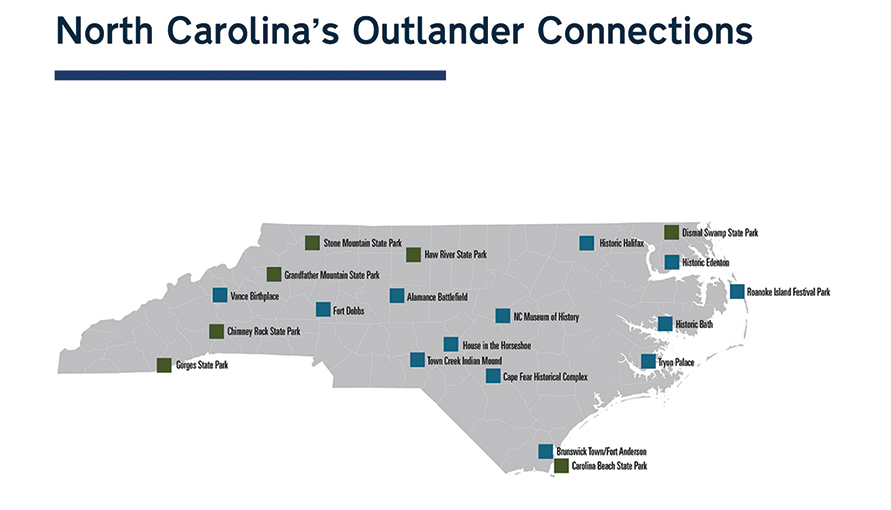
Last season ended on a hopeful note with Brianna, their daughter, reunited with their new son-in-law Roger MacKenzie and their grandchild. The Fiery Cross, the fifth book and upcoming season on STARZ this fall, begins with Colonial America on the verge of war and the British trying to snuff out the revolt. Claire knows that the American Revolution is only a couple of years away and is trying to prepare for it. Jamie is charged with an impossible task: leading a militia to wipe out the Colonial rebellion — headed by his Scottish godfather — or betray an old loyalist friend and the British king. Either way it could cost him everything.
The dilemma Jamie and Claire face is the same one that many people’s ancestors encountered when family members were pitted against each other in a world of divided loyalties. All the while, they’re dealing with the everyday issues married couples have, finding ways to stay together despite the challenges of the outside world. Conflict and the threat of war surround these new immigrants as they form friendships with the local Cherokee and Mohawk Nations, pirates, Loyalists, trappers, settlers and more. All the while, the reader experiences the foundational beginnings of the United States as seen through Claire’s modern eyes. Her views are sometimes countered with Jamie’s practical Scottish nature that softens with his love for, and trust in, his wife.
The provocative moments between Claire and Jamie, the impossible situations they face, how history intervenes, and how they try to make the world better based upon their honorable but flawed personalities entice the viewer. Whether they’re trying to change the outcome of Bonny Prince Charlie’s uprising, attempting to protect the Scottish clans while in France, fleeing to the Americas, or saving their daughter, these two characters may not always agree, but they find a way to come back together.
Their enduring devotion is embodied in The Fiery Cross when Jamie speaks to Claire:
“When the day shall come, that we do part,” he said softly, and turned to look at me, “if my last words are not ‘I love you’ — ye’ll ken it was because I didna have time.”
Locations:
The rich history and timeless love affair between Claire and Jamie has inspired many people to travel to Scotland to visit some of the sites that animate the books and to see where the scenes were filmed. Fans were hopeful that Drums of Autumn and The Fiery Cross would be shot in North Carolina, but the producers chose their own film studio, Wardpark Studios in Cumbernauld. Even though fans will have to travel to Scotland to see the film locations, they’ll be happy to know there are plenty of sites to visit in North Carolina that retrace the inspiration for the fourth and fifth books. Some of the key locations in the books and television show, Seasons 4 and 5, are located in the following places:
Fraser’s Ridge — Blowing Rock and Boone
This fictional 10,000 acres is where Claire and Jamie pin their hopes for the future of their family. Gabaldon has been quoted as saying that Fraser’s Ridge is located “up near Boone and Blowing Rock” on the Yadkin River. Many people also believe that Grandfather Mountain is a key landmark in Fraser’s Ridge.
Roanoke Island — Outer Banks
Claire discovers a set of standing stones like the ones in Scotland at Craigh na Dun.
River Run — Fayetteville
The fictional plantation of Jamie’s Aunt Jocasta at Cross Creek is on the banks of the Cape Fear River. Outlander’s fictional River Run “eventually became part of Fayetteville. Were there any Cape Fear River plantations at the time Jamie and Claire showed up at the fictional one belonging to Jocasta Cameron? Yes. But just two, said Fayetteville historian Bruce Daws after consulting a 1775 map,” according to the Fayetteville Observer.
Port of Wilmington
This is the location where Jamie and Claire are invited to the theater by Governor Tryon as well as introduced to a young Colonel George Washington and his bride, Martha. Claire lets Jamie know that Washington will be the first president of the United States. It isn’t all encores and roses — their daughter Brianna has a secret handfast ceremony with Roger, only to be brutally attacked by the scoundrel Stephen Bonnet.
Tryon Palace — New Bern
Tryon Palace was the home of the Royal Governor William Tryon, Colonial North Carolina’s eighth governor from 1765-1771, a historical figure fictionalized in Drums of Autumn. He’s the person who grants Jamie 10,000 acres of land, even though they both know that the British land grants are only for Colonists who are Protestant British . . . and Jamie is a Catholic Scotsman. This secret could be his undoing if Jamie’s background is revealed to the British Crown in Book 5/Season 5.
Alamance Battleground State Historic Site — Burlington
“On May 16, 1771, nearly 2,000 backcountry farmers, who called themselves ‘Regulators,’ confronted the 1,000-man royal militia of Colonial Governor Tryon. Dishonest sheriffs, illegal fees and heavy taxation led the farmers to call for regulation of public officials. These so-called Regulators were mentioned in Drums of Autumn (on which Season 4 is based) and more prominently featured in The Fiery Cross (on which Season 5 will be based) when their discontent erupted into the ill-fated Battle of Alamance. The battle is the central theme in The Fiery Cross and was, arguably, one of the most important battles of Colonial North Carolina that created tensions that helped spark the American War for Independence,” according to the North Carolina Department of Natural and Cultural Resources.
The DNCR has additional locations relevant to Outlander including:
Brunswick Town/Fort Anderson, Winnabow, North Carolina
Mentioned in A Breath of Snow and Ashes.
Bath, North Carolina
Stephen Bonnet, a notorious pirate in Drums of Autumn, is inspired by Stede Bonnet, who had ties to Bath.
Edenton, North Carolina
Mentioned in Drums of Autumn and The Fiery Cross.
Halifax, North Carolina
Mentioned in Drums of Autumn and The Fiery Cross.
Grandfather Mountain State Park, Linville, North Carolina
Estimated location of the fictional Fraser’s Ridge.
Cape Fear Historical Complex, Fayetteville, North Carolina
The epicenter of Scottish migration during the Colonial era. Fayetteville was once known as Cross Creek, mentioned in Drums of Autumn and The Fiery Cross.
Dismal Swamp State Park, South Mills, North Carolina
This is a backdrop for many settings in An Echo in the Bone, the 7th book.
House in the Horseshoe, Sanford, North Carolina
This was not in the books, however, in season 3, Voyager, it’s where they encounter the dangerous Stephen Bonnet.
Additional Sites:
Town Creek Indian Mound, Mt. Gilead, North Carolina
Haw River State Park, Browns Summit, North Carolina
Fort Dobbs, Statesville, North Carolina
Stone Mountain State Park, Roaring Gap, North Carolina
Vance Birthplace, Weaverville, North Carolina
Chimney Rock State Park, Chimney Rock, North Carolina
Gorge State Park, Sapphire, North Carolina
Events:
Fraser’s Ridge Homecoming, Ferguson, North Carolina
A four-day Outlander-themed event at Leatherwood Mountains Resort, Thursday, Oct. 3 – 6.
New York Comic-Con 2019
Outlander will be taking center stage. Cast appearances have yet to be confirmed. Thursday, Oct. 3 – 6 at the Jacob K. Javits Convention Center, New York
Outlandish Hillsborough
Ayr Mount Historic Site, Hillsborough, North Carolina, Friday, Oct. 11 – 13. Weekend event to celebrate the Outlander series. “Step Through The Stones” Sunday, Oct. 13, at 10 a.m. — 4 p.m.
Discovering Tryon Palace — Outlander Home and Hearth, New Bern, North Carolina
Saturday, Oct. 19 and Nov. 16 at 9:15 – 10:30 a.m.
Galaxy Con — Louisville, Kentucky
Nothing like Thanksgiving with Dougal MacKenzie ready to pour a drink and steal your wife. Dougal MacKenzie, played by Graham McTavish, will be there with more actors to be announced. Friday, Nov. 22 at 10a.m. – Sunday, Nov. 24 ending at 8 p.m.
The Land Con — Paris
Feel like fleeing the country and going to France like Claire and Jamie in Book 2? Try Paris and see Sam Heughan (Jamie Fraser), Cesar Domboy, David Berry, Ed Speleers, Sophie Skelton, Richard Rankin, John Bell, Steven Cree. Saturday, Nov. 30 – Sunday, Dec. 1. PS
Gayvin Powers, author and writing coach at Soul Sisters Write, just finished her latest middle grade adventure book set on Roanoke Island. She can be reached at hello@gayvinpowers.com.
Famous faces of the Sandillls
By Jim Moriarty • Photographs By John Koob Gessner and Tim Sayer
Costuming by Mary and Marcie McKeithen, Showboat
The idea that somehow, somewhere, there is someone who looks just like you is so deeply embedded in the human psyche it could have been a whole new level of awareness in Sigmund Freud’s study of the mind or maybe a McGuffin in an Alfred Hitchcock movie.
Alter egos, evil twins, double spirits — whatever you want to call them — show up in folklore, religions and cultures throughout human history. Dostoyevsky wrote a novel about it. Stephen King waded into its DNA. Donald Duck has a double, and so does Droopy. Homer Simpson has a doppelgänger named Guy Incognito. So it occurred to us we may have a few doppelgängers of our own. What follows are some of the most recognizable works of art ever created and the people who look, rather surprisingly, as if they could have been the ones in the frame.
The Son of Man – Photograph by John Koob Gessner
Belgian surrealist painter René Magritte created The Son of Man in 1964 as a self-portrait. “Everything we see hides another thing, we always want to see what is hidden by what we see,” said Magritte. Most recently the painting played a staring role in the 1999 remake of The Thomas Crown Affair. The apple of our eye is, well, anyone’s guess.
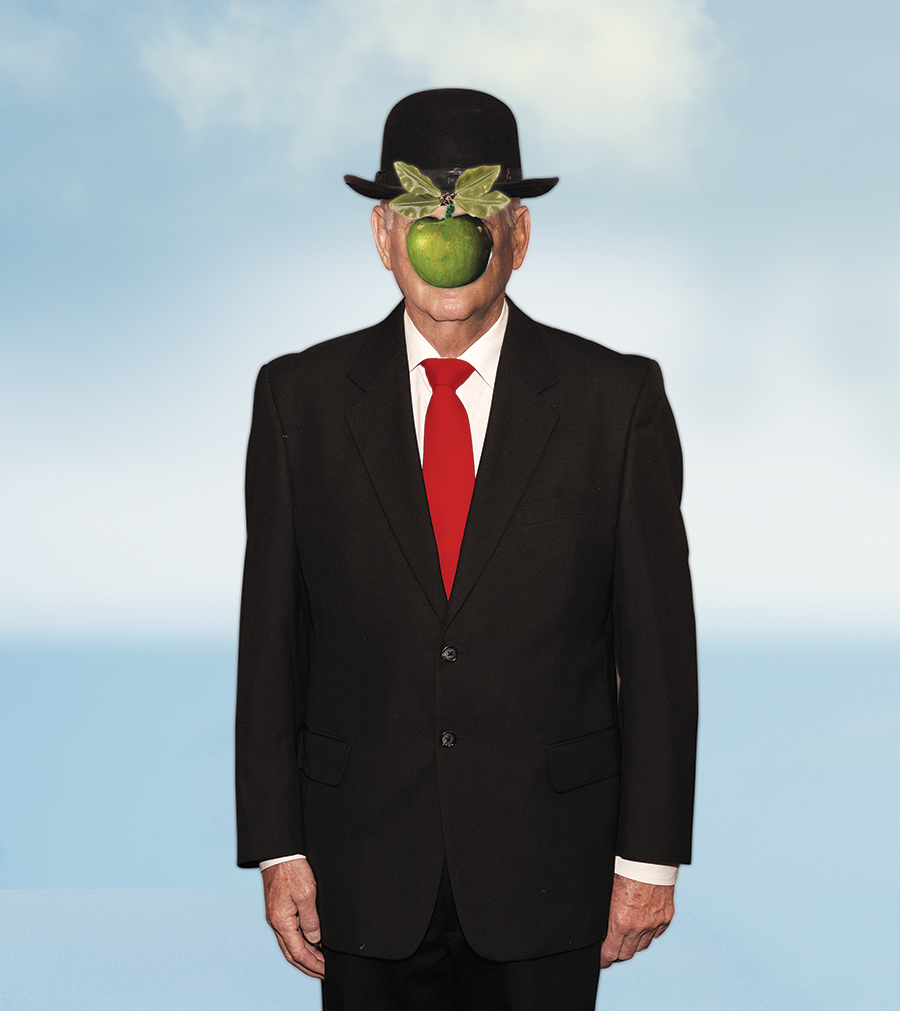
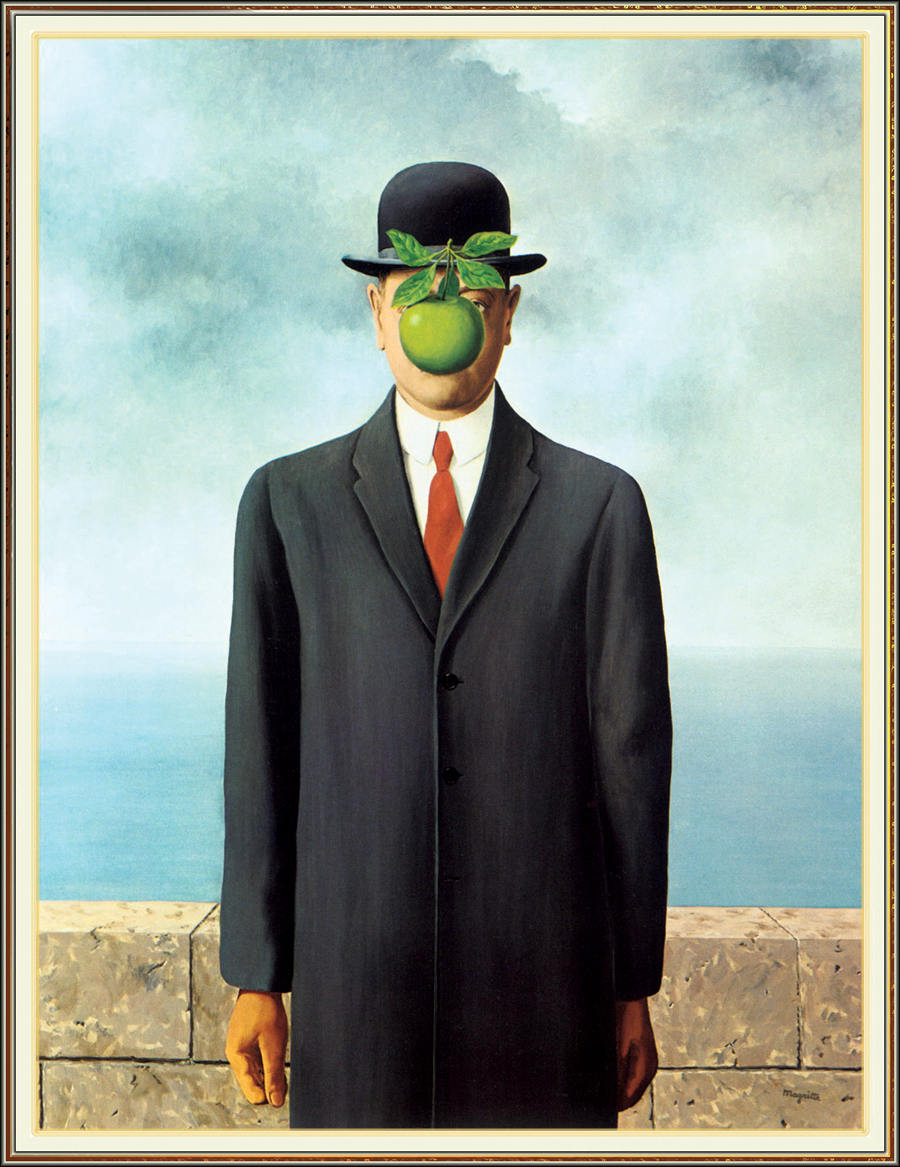
Buzzards Glory – Photograph by John Koob Gessner
Created by Andrew Wyeth in 1968, this is a portrait of Johnny Lynch, a Chadds Ford, Pennsylvania, neighbor of Wyeth’s. In his autobiography Wyeth said, “I, frankly, was intrigued by his jet-black hair. The title is the section of Chadds Ford — the Italian part of town — where his family lived for some time.” Franklin Dean, a certified general real estate appraiser for Village Appraisers LLC, steps into the frame as our Johnny Lynch.

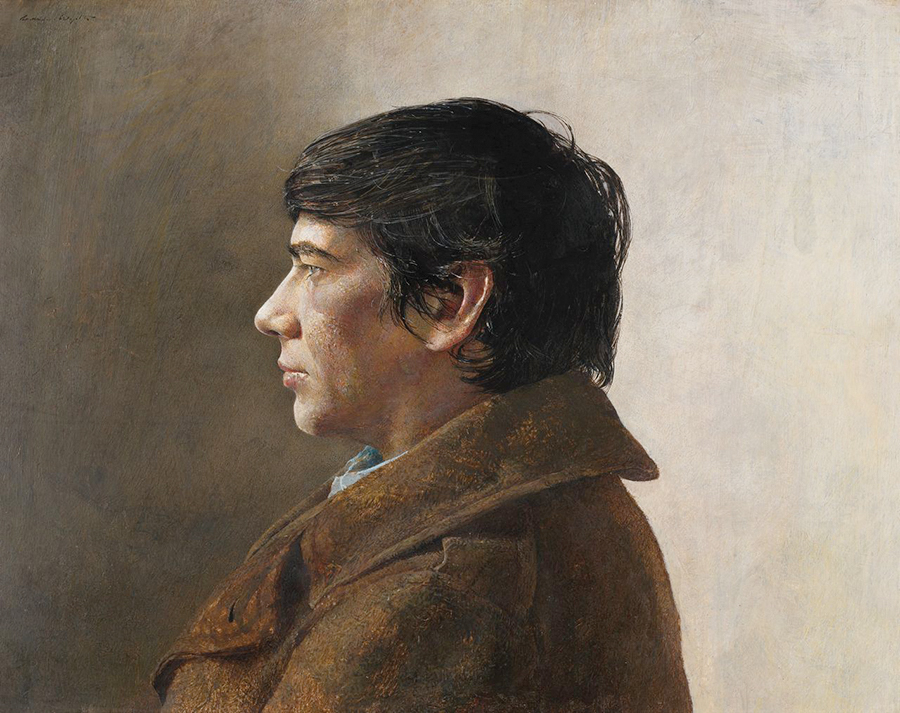
Portrait of Madame X – Photograph by Tim Sayer / Hair and Makeup by Caleb Marion
John Singer Sargent’s 1883 painting of the young socialite, Virginie Amélie Avegno Gautreau, the wife of a French banker, caused a sensation at the Paris Salon of 1884. The model, an object of fascination for artists, was an American expatriate who became notorious in Parisian society for her beauty and rumored infidelities. Another artist of the period, Edward Simmons, said that he “could not stop stalking her as one does a deer.” We hunted down Fiona McKenzie, the Department Chair of Culinary and Pastry Arts at Sandhills Community College, to be our Madame X.
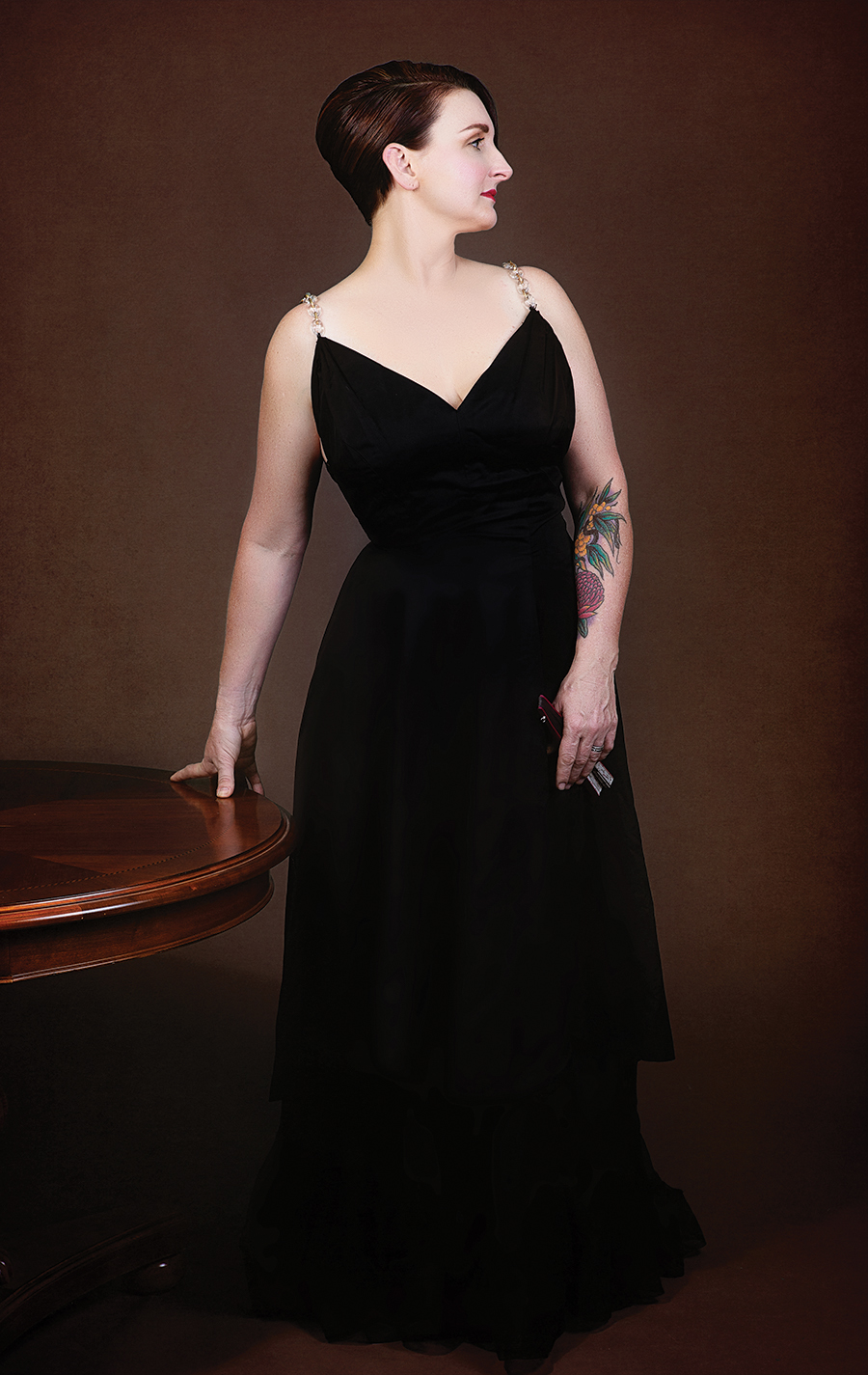
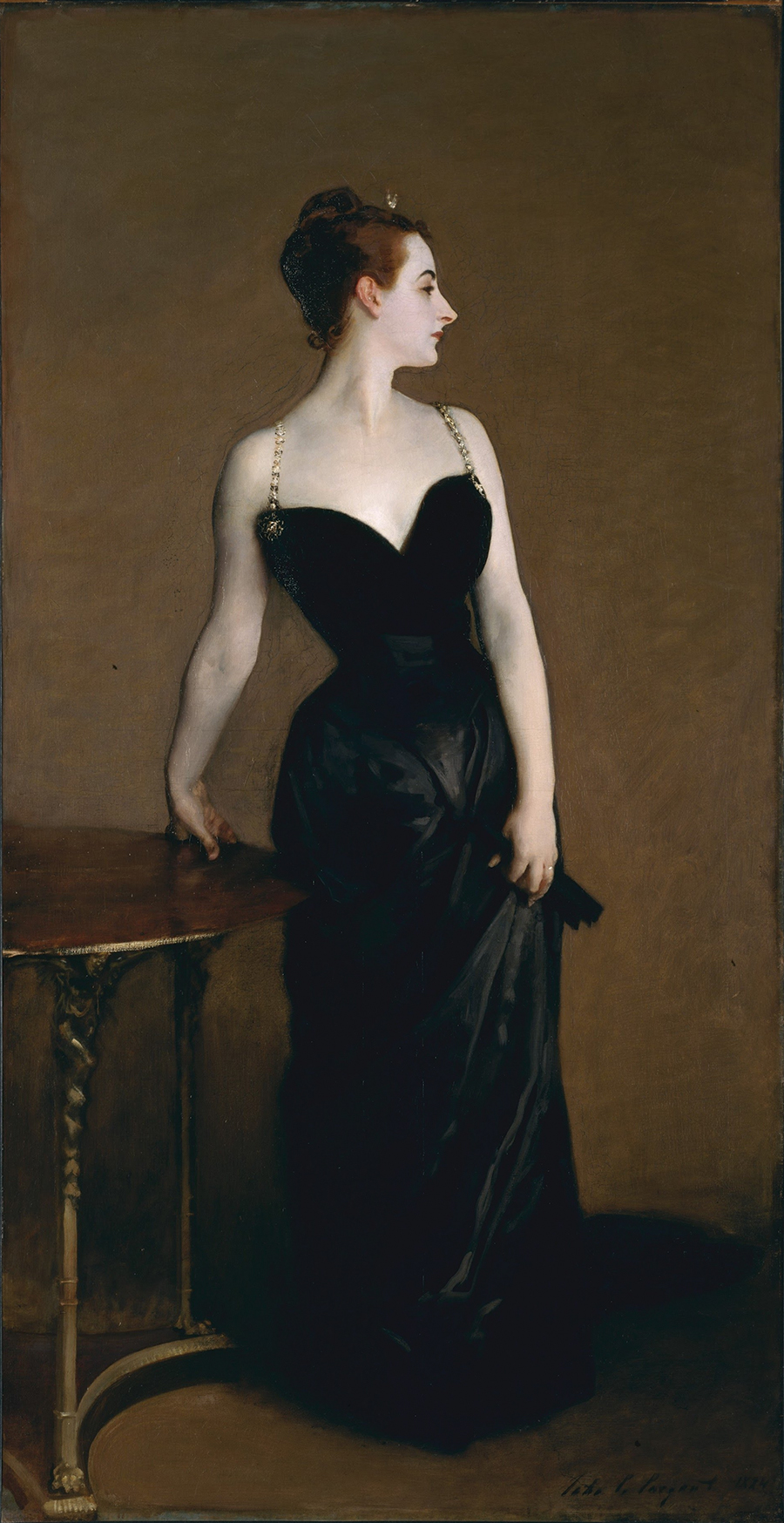
Self Portrait with a Beret – Photograph by John Koob Gessner
Painted by the French Impressionist Claude Monet in 1886 when he was 46 years old, it’s one of several self-portraits done by Monet when he was living in Giverny, France. Though his brow is slightly furrowed, there is a twinkle in his eyes. Our Monet is Max Reeder, a network engineer at Fort Bragg and a local musician.
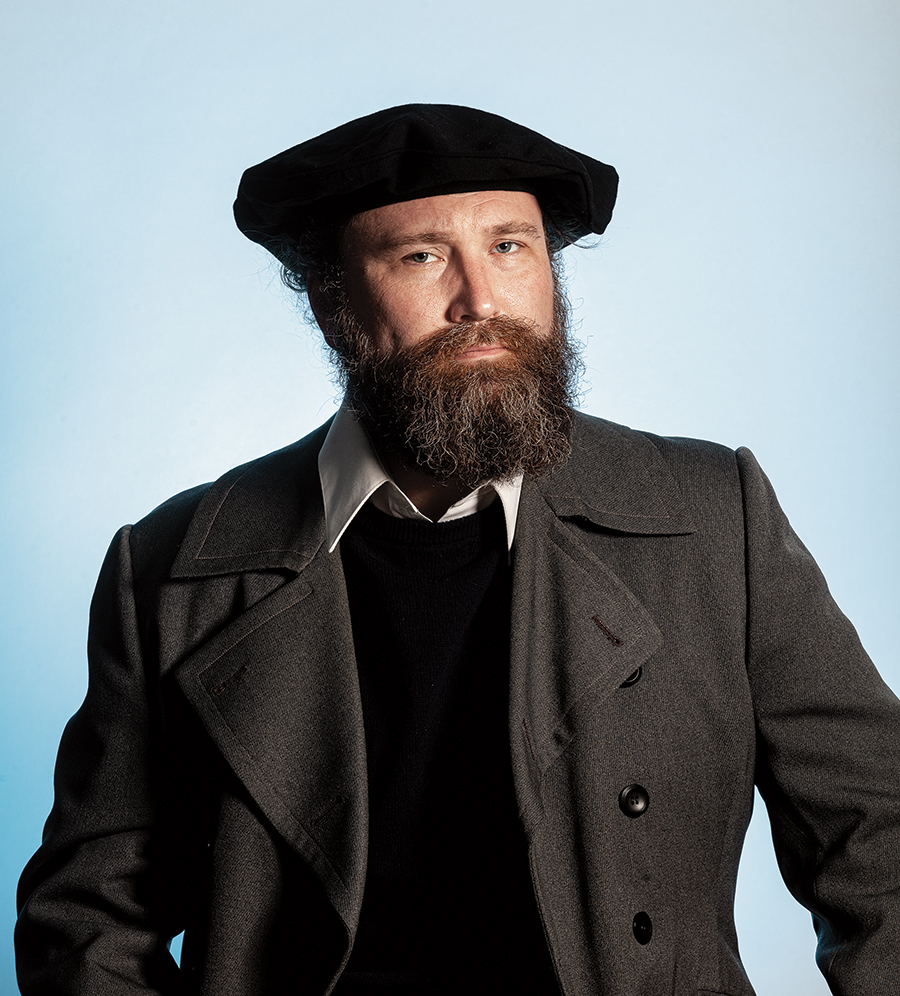
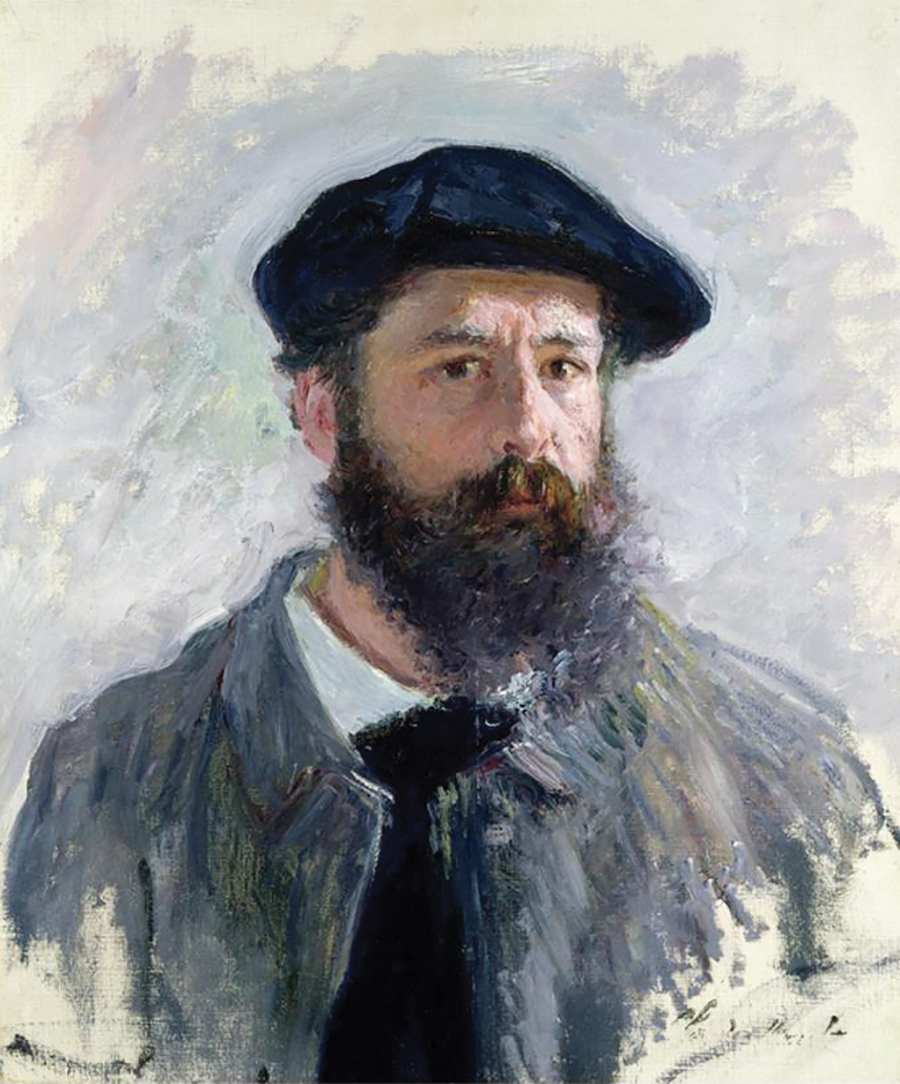
Mona Lisa – Photograph by Tim Sayer / Hair and Makeup by Retro Salon
Believed to have been painted between 1503 and 1506, Leonardo da Vinci’s portrait, thought by many to be of Lisa Gherardini, has been described as “the best known, the most visited, the most written about, the most sung about, the most parodied work of art in the world.” It hangs in the Louvre Museum in Paris but our Mona Lisa, Stephanie Sims, can be found at Swank in Southern Pines and is strictly local.
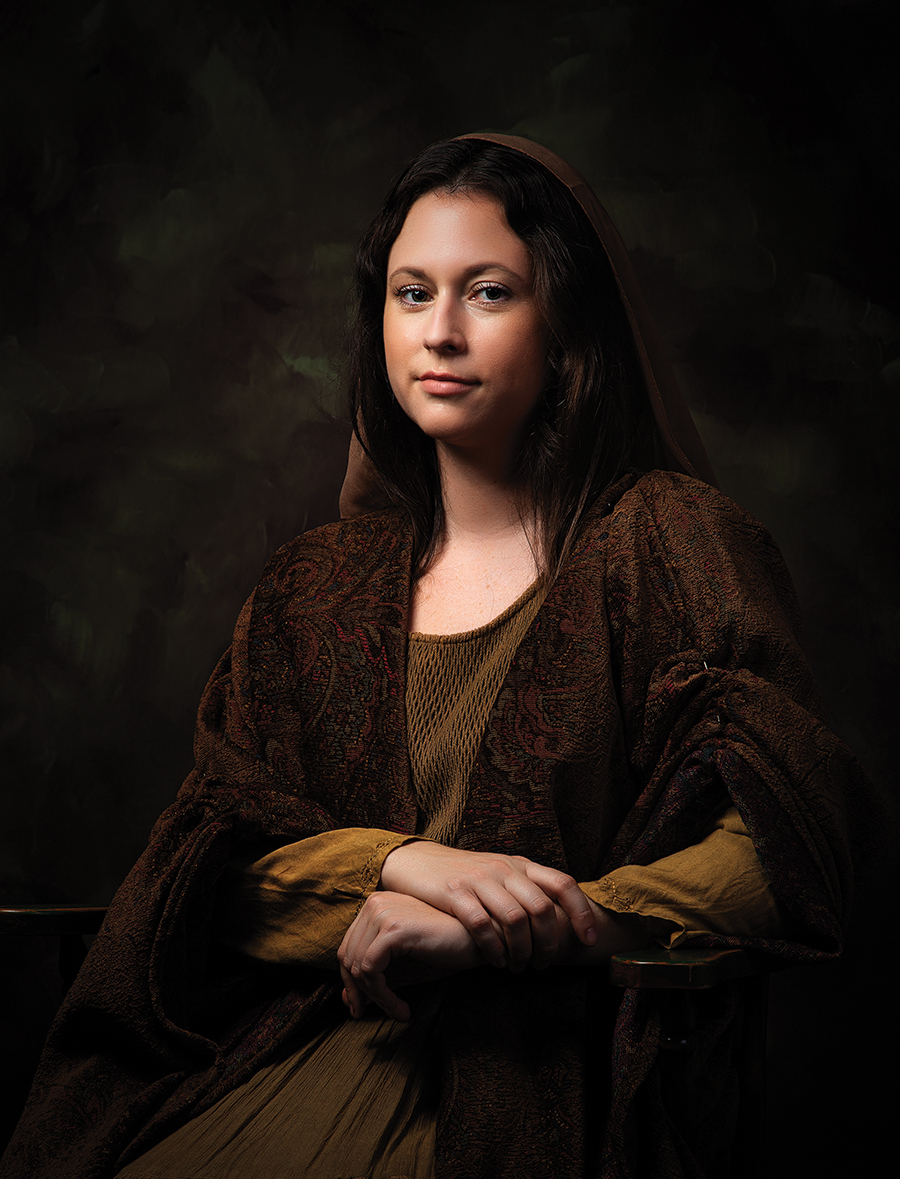

Lady with an Ermine – Photograph by Tim Sayer / Hair and Makeup by Retro Salon
Cecilia Gallerani, the mistress of the Duke of Milan, is the subject for this portrait done by Leonardo da Vinci around 1489-90. It, and the Mona Lisa, are two of only four portraits of women painted by Leonardo. The Lady with an Ermine was painted in oils, a relatively new medium in Italy at the time, on a wooden panel. Our lady is Houston Verbeck, a nursing student at Sandhills Community College who also works at Curt’s Cucina in Southern Pines.
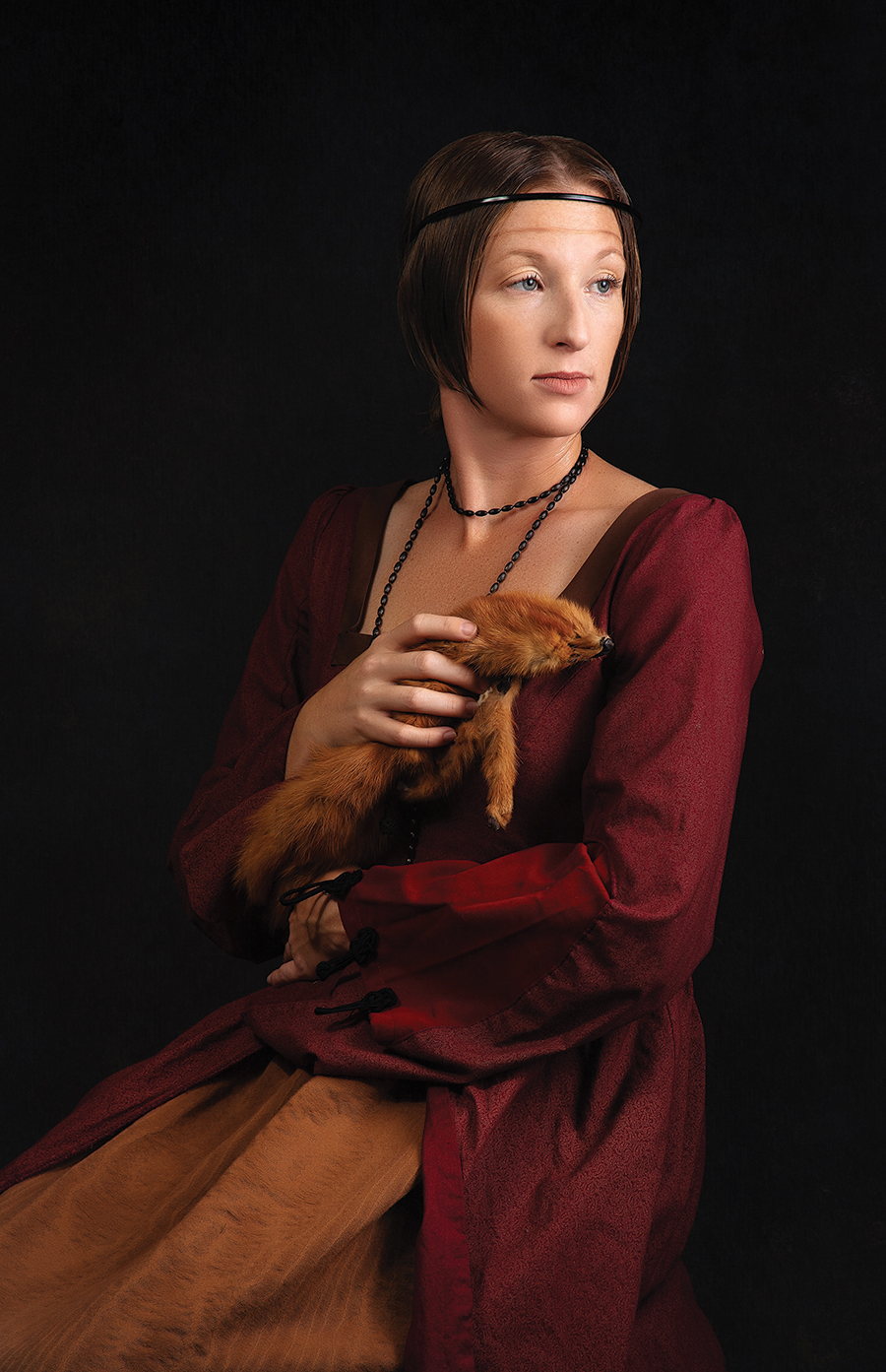

Portrait of Adele Bloch-Bauer I – Photograph by Tim Sayer / Hair and Makeup by Retro Salon
Made at the height of Gustav Klimt’s career, the 1907 portrait is a mix of naturalism — in the face and hands — and the ornamental decoration of the dress, influenced by Egyptian art. Adele was one of Klimt’s mistresses and has the distinction of being the only person the artist ever painted twice. Our Adele is Katrina Denza, the associate editor of Narrative Magazine and the chair of the Weymouth Center for the Arts and Humanities residency program.
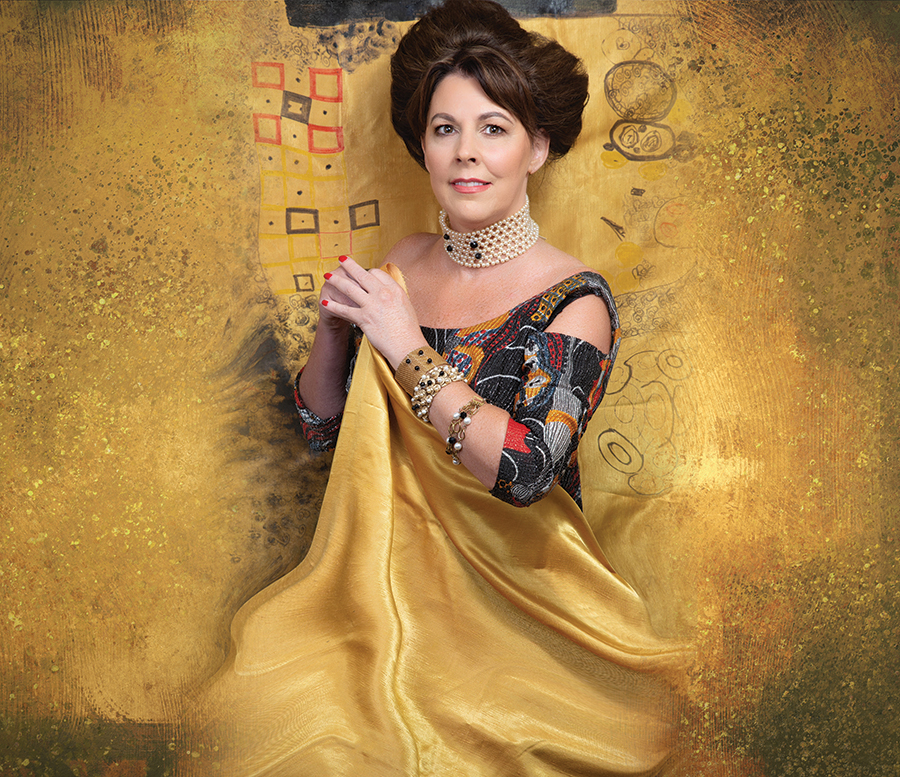

Portrait of Henry VIII – Photograph by John Koob Gessner
Possibly a study for a larger mural destroyed in a fire, this painting is the only surviving work of Henry done by Hans Holbein the Younger and one of the most iconic images of any British monarch. It was created in 1536-37. The larger original was intended to hang in the privy chamber of the Palace of Whitehall. Stepping in as our facsimile is Anthony Parks, the king of The Ice Cream Parlor in Southern Pines.
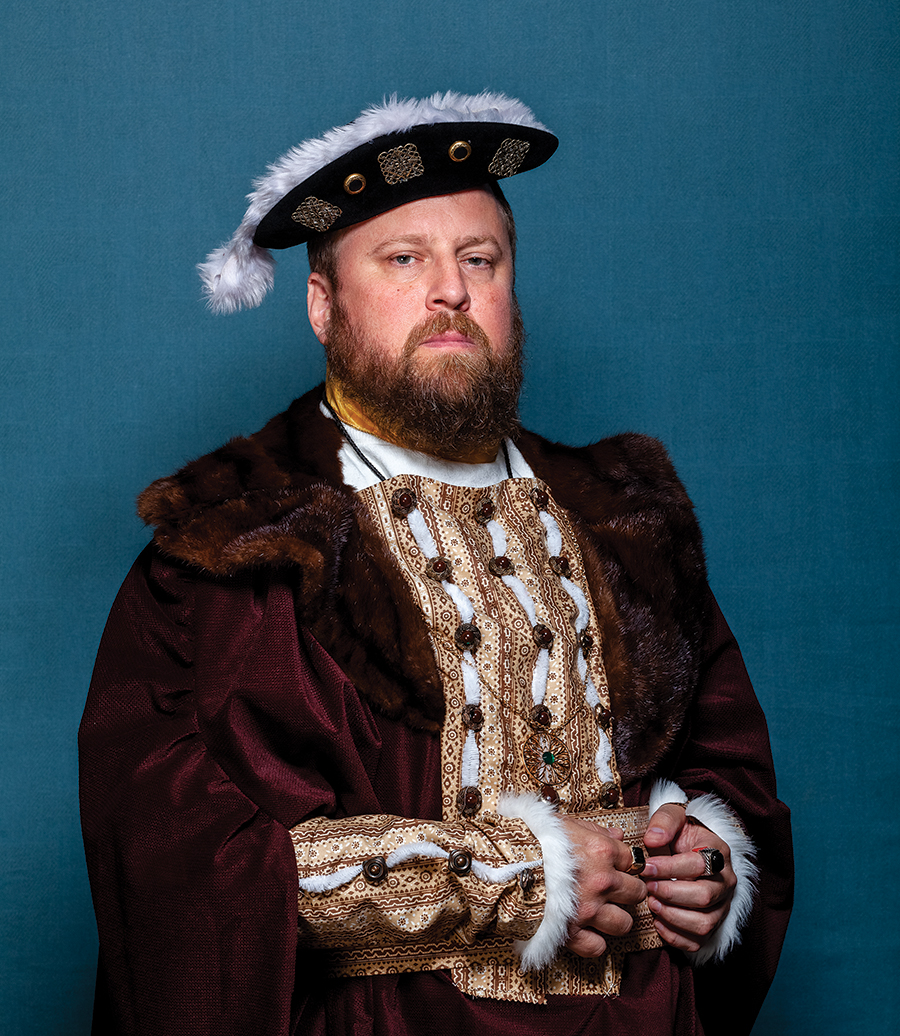

A Bar at the Folies-Bergère – Photograph by Tim Sayer / Hair and Makeup by Caleb Marion
First exhibited at the Paris Salon in 1882, the painting is considered one of Édouard Manet’s masterworks. It depicts a scene in the Folies Bergère nightclub in Paris. The woman at the bar is a real person, known as Suzon, who worked at the club. Our Suzon is Jessie Pollitt who tends the Pure Barre in Southern Pines.
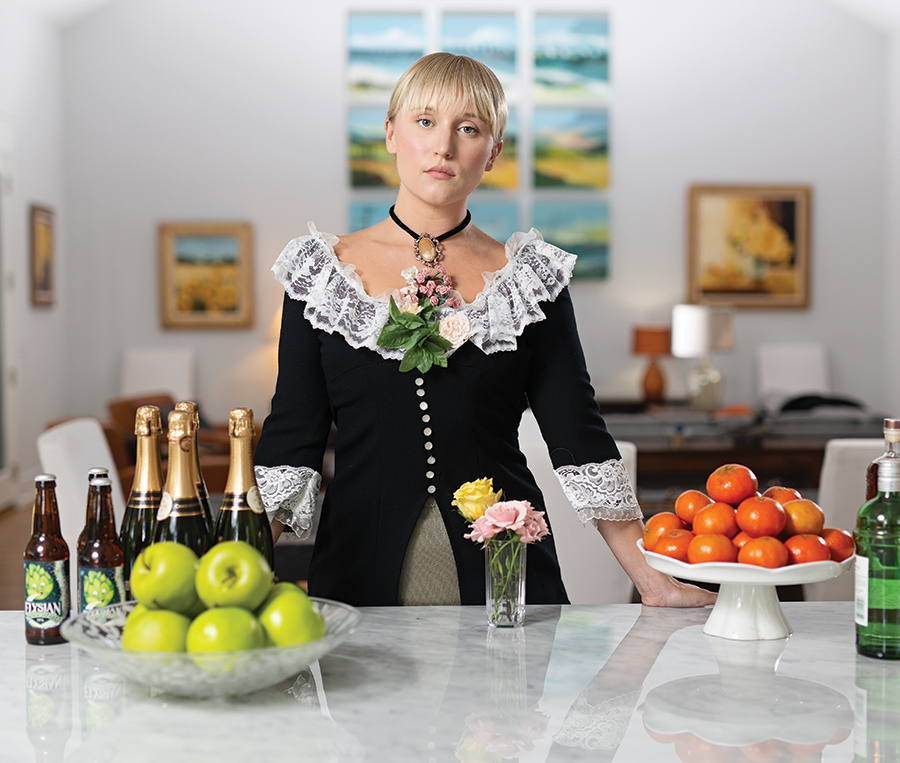
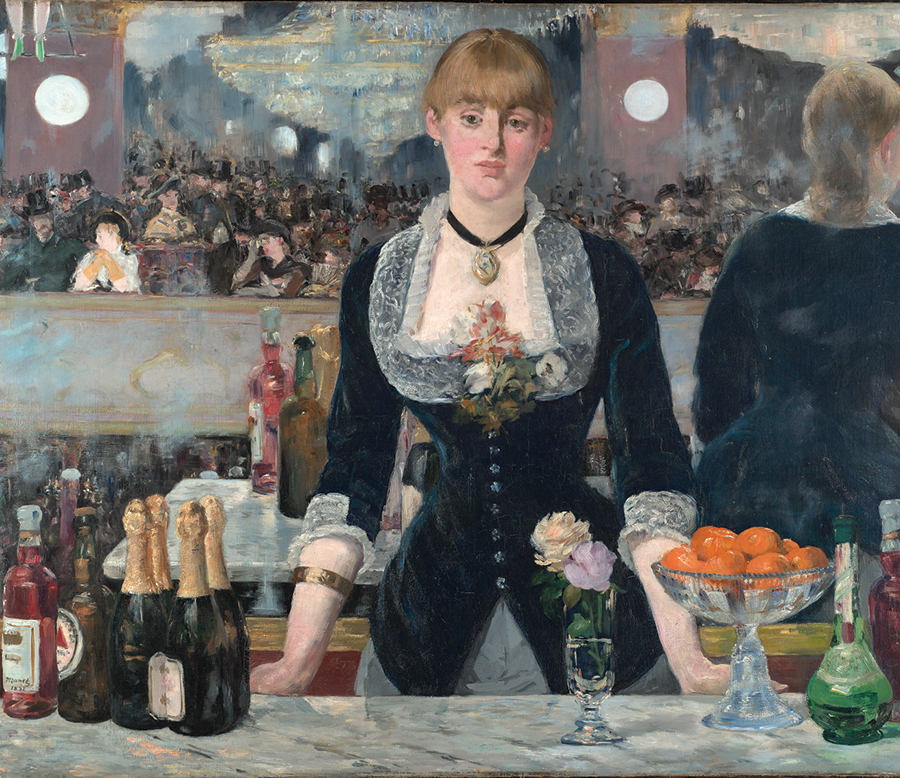
The Airstream isn’t such a bad idea after all
By Tom Bryant
There was to be a full moon — not just a full moon, but an October harvest full moon. Linda, my bride, and I were at what has become known in our family as our beach house, and it’s often located at Huntington Beach State Park, right below Murrells Inlet in South Carolina.
Beach house is a misnomer in a way, because we pull our little house, actually an Airstream trailer, behind our Toyota FJ Cruiser. The beauty of not having a real location at the coast is that we can take our vacation home with us and then put it up until it’s needed again.
We love the coast in the early fall. There’s just enough edge to the ocean breeze, the bugs are diminished, most of the kids are back in school, and it’s too early for the invasion of the snowbirds, the nickname given to the folks that leave their winter-frosty states up North for warmer climes. The surf has cooled enough to bring in big reds, flounder and other sport fish that will keep me on the beach, happily fishing for hours.
We usually try to get to Huntington several times a year, but October has become a must month for a trip. Sadly, this area has been discovered. In the past, we were able to reserve a site just about anytime we would call; but the spillover from Myrtle Beach, plus our friends from the North, and now-retiring baby boomers who have discovered RV camping fill up the place every week. During the summer season, reserving a site is practically impossible; and even in the off-season, it can be hard to get one.
This week, though, was to be a restful time, kinda laid back, maybe with some bike riding, of course fishing, and naturally we would work in some time to visit our favorite seafood restaurants down in Georgetown. We would absolutely have to budget a day trip to Charleston to check out old familiar places and see if they were still familiar. It was to be a busy but happy 10 days.
Linda and I walked out on the beach right before moonrise to watch the amazing, almost surreal moon ascend from the ocean like an ancient god. A golden magnificent orb to begin with, the moon drifted to a grey-white with the valleys and craters clearly visible. I had carried a couple of low-slung beach chairs with us, and we sat right at the surf line and listened and watched as Mother Nature put on her best show.
There were a few walkers, and a solitary fisherman was trying his luck down the beach; but for the most part, we had the strand to ourselves as we watched the moon get higher, lose its orange glow, and diminish in size. As the tide began to change we headed back to the Airstream and the dessert that we had postponed, being too full after our delicious shrimp dinner.
After dessert, Linda worked on an art project she had brought, and I decided to sit under the awning for a bit and have a cup of coffee. The full moon lit the campground with a soft glow, and I watched as a few walkers took a late stroll before bed. There were several tent campers at the site across from us, and they were sitting around a campfire softly talking as one of them strummed a guitar. It was a peaceful, restful evening.
I watched the young folks having a good time and remembered the days when we used to tent camp. I use the word “we” rather loosely because Linda was never a big advocate of spending a night in a tent. She did it one time. Thinking about those early days reminded me how my camping experiences have changed over my many years sleeping in the great outdoors.
To say they have changed is an understatement. Here we’re camped in the little Airstream with most of the conveniences of home. Our experience today can hardly compare to the years I used an Army surplus pup tent as a kid. The little tent worked fine, though, unless a driving rain drenched the campsite, then the tent leaked like a sieve. I always carried a waterproof duffle bag to stuff everything in that had to stay absolutely dry.
After the pup tent came a waterproof sleeping bag that I won by selling Christmas cards. I completed the requirement of moving the first batch of cards, primarily to family and friends, and received my sleeping bag. That wasn’t the end of it, though. The greeting card company I was dealing with sent another batch of cards, unannounced and unrequested. I was also responsible for selling this bunch. With the second batch came all kinds of threats on the chance that I didn’t complete the sales task. After a call from my father to a company representative, the problem was rapidly solved. I got to keep the sleeping bag and could have kept the cards, but my dad convinced me that the best thing was to pack them up and send them back to the company, collect.
The so-called waterproof bag worked OK if there was only a heavy dew, but any kind of rain would seep through the outer lining, and I would wake up as wet as if I had just gotten out of the bath. There were other problems, too. I was not the only one sleeping under the stars. Outdoor creatures, you know, have a tendency to do the same thing.
One early spring night, I was stretched out in my bag and dozed off after a strenuous day afield. As a precaution against snakes, I had placed a rope around the bag. I had read somewhere, or probably more like it, had seen it on a Roy Rogers western movie at the old Aberdeen theater, that a rope around your sleeping pad would keep out snakes. I can attest to the fact that it worked, no snakes that night. Early that morning, though, as I was really sawing logs, I was awakened with a start: An animal was licking my face. After a few seconds of terror, I discovered that it really isn’t impossible to climb an oak tree in a zipped-up sleeping bag. When I realized that the culprit that tried to eat my face was my trusty companion and watchdog Smut, I climbed down the tree and gave the dog a serious scolding. I believe though that Smut had heard me snoring and was just checking to see if I was all right. Linda will sometimes do exactly like Smut, no licking, just a firm elbow to my arm. Works fine, only difference, I don’t climb trees.
My next camping experiment was with a jungle hammock. It worked great, got me off the ground. Only problem was it was designed strictly for summer. After a winter night hanging between a couple of pines rapidly turning into a Popsicle, I decided to relegate the hammock to summertime use only.
My last piece of camp housing gear was a Eureka four-man tent. It worked great, and I still have it stored in one of my camping closets. Maybe I’ll break the old tent out one of these days and see if I can still rough it.
Naw, not gonna do that. I’ve gotten too used to the good camping life. Plus Linda would stay home. PS
Tom Bryant, a Southern Pines resident, is a lifelong outdoorsman and PineStraw’s Sporting Life columnist.
Retirees resurrect Walter Hines Page residence
By Deborah Salomon • Photographs By John Koob Gessner
Twenty years ago, Dr. Russell and Ann McAllister decided to downsize from a 4,000- square-foot home in Durham. Their children were grown. Russell, a cardiologist, anticipated retirement. Golf wasn’t a factor. So what did they do? Purchase an empty and neglected 6,000-square-foot manor house on 5 acres with two tennis courts and a 20-by-40-foot pool, built in Pinehurst, circa 1916, for U.S. Ambassador to the United Kingdom, Walter Hines Page.
Page, appointed by Woodrow Wilson, served during World War I. His father, Francis Page, had made a fortune in logging and construction. The elder Page is credited with founding Cary and Aberdeen. Son Walter, who followed more intellectual pursuits (journalism, teaching, publishing), shifted his attention and residence to England, planning to return, eventually, as a gentleman farmer. Illness brought him back to Pinehurst, where died in 1918, at 63, without fully occupying the stately residence called Garran Hall.
The McAllisters’ acquisition of the Georgian manor, renamed Hollycrest, spins an unlikely tale.
Ann: “A friend asked me to come down from Chapel Hill with her to help find a house in the Sandhills. We looked through some brochures.” One caught Ann’s eye. The agent offered a showing. “It had been vacant for 16 years. As we came up the drive it looked like a haunted nursing home.”
By chance, the house was open. They tiptoed in.
(Roll the spooky music.)
“I had a moment,” Ann recalls. She saw beyond the cobwebs to the grounds, the scope and isolation. “I adore magnolias,” which were plentiful. She faces challenges without fear.
Russell: “I was at choir practice when Ann called to say she had found what she always wanted. And all those years I thought (that something) was me.” Instead, a brick masterpiece, simple and dignified, built longitudinally one room deep, with a wing at each end.
This faded beauty oozed potential. Ann possessed expertise; she had renovated a historic home in Kentucky, also trained as a docent at The Hermitage, President Andrew Jackson’s residence in Nashville, Tennessee.
Nevertheless, Russell — also a history buff — came down, took one look and uttered, tapping his forehead, “She needs help.”
She got the practical kind from the architect who designed their Durham home. But interiors executed in a genteel Southern mode are Ann’s alone.
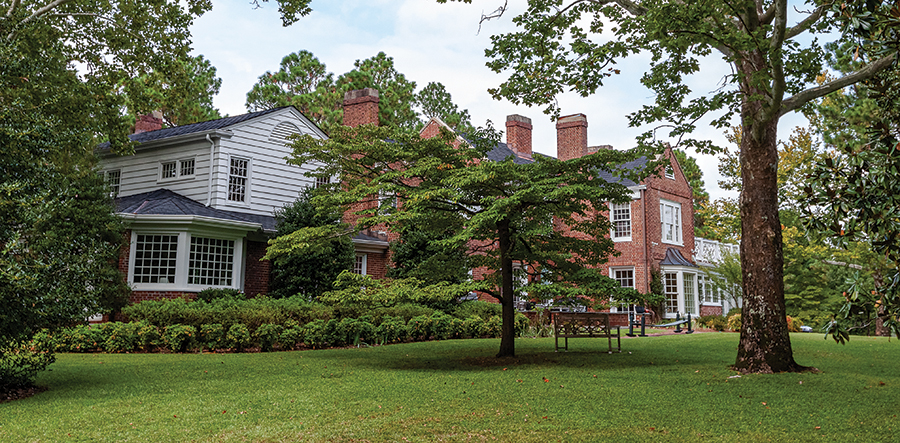
Once termite damage had been rectified and the skeleton exposed, the crew got to work on making the house 21st century livable: Enlarge the main floor master suite and bathrooms, create a kitchen (original in the basement, which now houses a wine cellar), install new systems (five-zone AC), add two staircases and enough paneling, coffers and moldings that, if laid end to end, would reach W.H. Page’s grave in Aberdeen.
They were able to save all seven carved mantels, most doors and some oak flooring, which was lifted, repaired and relaid. Workmen ran into trouble when replacing the front portico, deemed wrong for the era. During its removal, bricks fell off the house front. The hunt for matching ones took three months.
The blush pink salon — nearly 40 feet long, with tall bare windows parading down both sides — remained intact, divided into conversation areas by white sofas, chairs, rugs and tables. One end is anchored by a fireplace, the other by a 15th century millefleurs tapestry reproduction, where the background is composed of tiny flowers.
Given the dimensions, Russell envisioned it a ballroom.
“We love to dance.”
Less imposing on a quiet evening are several sitting rooms, including one adjacent to the kitchen, also Ann’s Blue Room displaying her Delft collections, notably tiles framing the fireplace. Part of Russell’s second-floor office doubles as the TV room. Her favorite is the library just off the kitchen, where a round ottoman upholstered in a fabric featuring life-sized cats dominates floorspace.
“Playfulness,” Ann calls it. “Every room needs a laugh.”
Laughing from the top of a highboy is her collection of nutcrackers brought back from a year in Switzerland. Russell identifies the odd painted wooden benches on the veranda and by the front door as joggling boards, a low country craft.
“This is where you sit with your girlfriend and ‘joggle’ closer and closer.”
How refreshing to see serious antiques placed beside a cat fabric and pig-shaped leather footstool. In the foyer Ann again accomplished this with her mother-in-law’s Governor Winthrop-style desk a few feet from a low rack draped with a velvet jester’s cap, a French gendarme’s hat and assorted headgear collected on their travels.
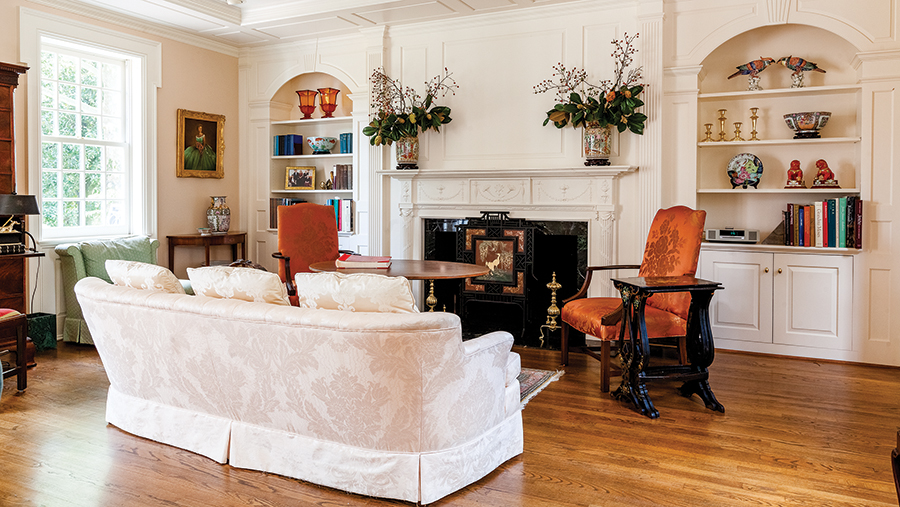

Ann’s fabric/wallpaper preferences lean toward chinoiserie patterns with flowers and birds of paradise, popular in Europe when Asian trade routes opened during the 17th century. Some have a silky sheen. Her method: Haunt fine fabric shops in Charleston, Atlanta and Durham, purveyors of brands like Scalamandre and Brunschwig & Fils, for finds and bargains. When something catches her eye, “I buy it, a lot, and build the room around it.”
The gap between purchase and use can be years. Other times, the fabric completes a theme, as in the upstairs nursery. Here, a medieval tone is set by a brass canopied crib, fit for a prince, first used by the McAllister children, now by the grandchildren.
Ann attributes recurring Asian themes, notably lamps, to time their son spent at the University of Beijing.

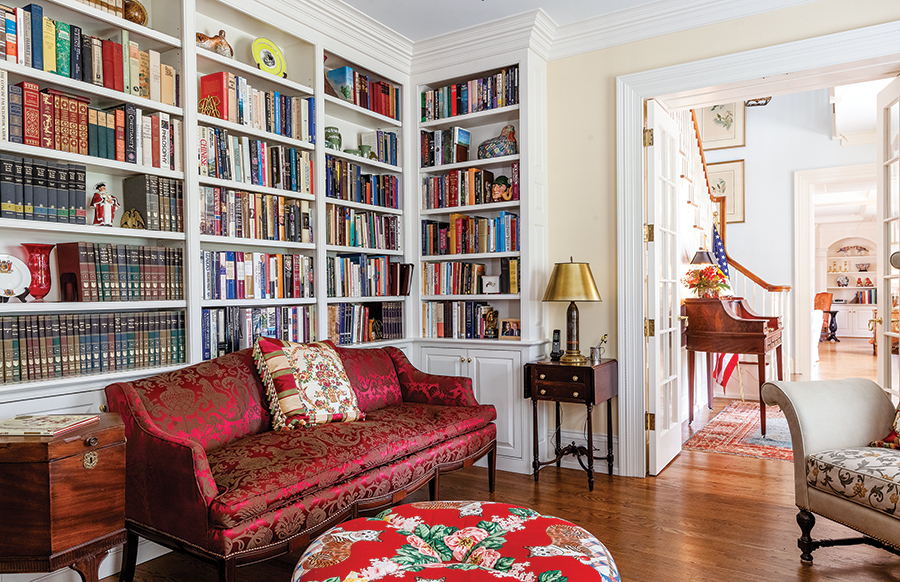
Furniture wasn’t a problem. Russell descends from an old Virginia family, Ann from a Tennessee counterpart. Heirlooms aplenty trickled down, including a Biedermeier chest, many desks, side tables, campaign and other chairs, a bachelor’s chest, armoires, classic dining room pieces and, of course, ancestral portraits: Russell’s kin, a handsome assistant surgeon general of the Confederate Army, shares a wall with his stern-looking wife. “When you have enough relatives who die on both sides you can pull it together,” Ann learned.
Her kitchen, created from scratch, pushes the envelope in another direction. The toile wallpaper in giant black-on-white figures suggests a formality not reflected in matte black granite countertops, preferred for their well-worn look. The low storage island doubles as a dinette table, and two farm sinks (one in an open butler’s pantry) help when the McAllisters entertain. The wall of windows over the main sink faces an expanse of grass bordered by elder magnolias and American plane trees, with pool and tennis courts beyond.
“Every morning at 6:30 I look out and see a deer herd go by,” Ann says.
Indeed, Hollycrest qualifies as lodging for royalty. Elizabeth Demaine, who purchased the property in the 1940s, hosted the Queen of Thailand, a college friend, and her entourage there. Demaine, a foxhunter, changed the name to Hollycrest, adding stables and kennels — even an enclosure for peacocks, known to be guard birds.
Demaine’s favorite horse is buried on the property.
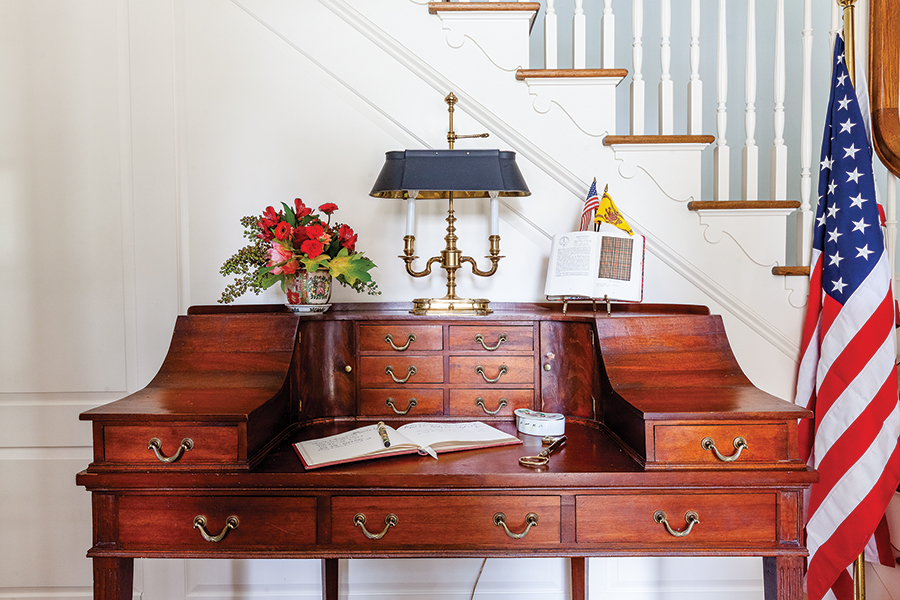

All things considered, the beauty of Hollycrest lies in the sum of its details: the old-fashioned robin’s egg blue and barely pink downstairs walls contrasting to dark, vivid teal and red upstairs, accomplished by first painting the surface black, then overlaying color. The Tennessee marble used for a powder room vanity. The original polished brass hinges and doorknobs. A narrow spiral staircase. Brick gateposts and a circular drive to match house proportions. Art purchased worldwide just because the collectors liked it. A secret coat closet, under the main staircase. A collection of tiny Hummel figurines. The handpainted folding screen in the dining room. Shelves of Southern literature and gardening books in Ann’s sitting room. A tiny refrigerator built into Russell’s office bookcase, containing his favorite beverages and the grandchildren’s.
Lucky grandchildren. Ann and Russell located a furnished “wee cottage” just tall enough to accommodate grade-schoolers. They arranged for its transportation, in toto, by sky crane, then secured it with a foundation.
Alice found no match in Wonderland.
Next up, lighting the tennis courts so the McAllister’s daughter, who played for Princeton University, can teach her children.
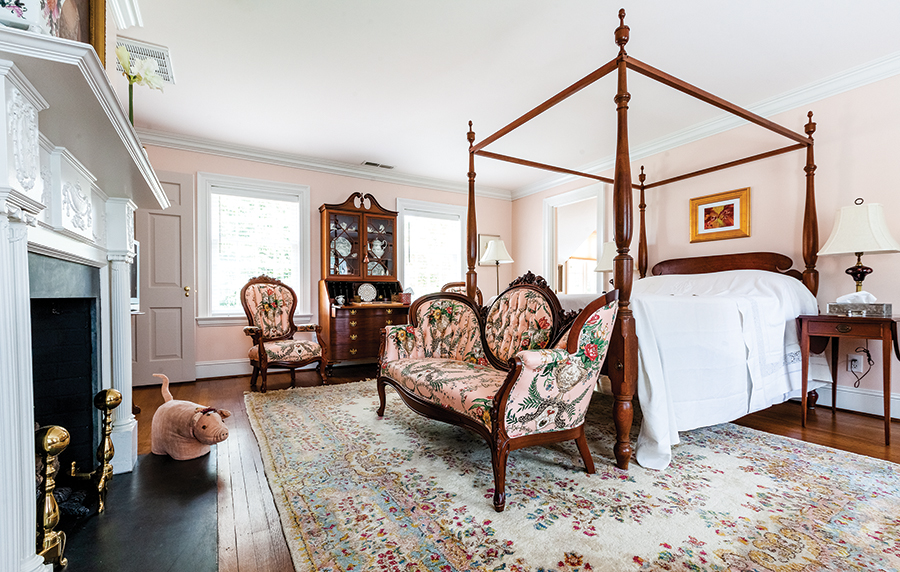

What Ambassador Walter Hines Page started others have continued in a style both innovative and respectful of times when people paid calls, wrote thank-you notes and took Sunday drives. As its current chatelaine Ann McAllister realizes, even greater potential as a family homestead.
“This house needs three or four kids running around. I have tried to preserve it for someone down the path, a continuing challenge.” PS
Where do your supplements come from?
By Karen Frye
Many years ago, when I first opened my natural food store, there were a handful of companies that produced vitamins, minerals and other nutritional supplements. It is amazing how many are in the industry today. There’s so much on the shelves to choose from that it can be confusing if you aren’t up on the background and standards of the manufacturers.
With the exploding popularity of supplements, some companies jumped into the business with dollar signs in mind — but that’s not true of everyone. A wonderful example is Gaia Herbs, located in the western part of North Carolina just outside Brevard.
Gaia Herbs is a Certified B Corporation. The B Corporation certification is a private certification issued to for-profit companies by B Lab, a global nonprofit. The “B” stands for benefit. To become a B Corp the company must be totally transparent. The standard represents a company’s dedication to sustainability and social impact, with transparency in every aspect of production, accountability, and social and environmental performance. B Corps have elevated the standards in the supplement industry by redefining success with a focus beyond profit.
Every year Gaia Herbs hosts a farm tour, and this past August I had the chance to attend the event. It was a real learning experience to see the great lengths they go to in the production of their herbal supplements. The business started about 32 years ago. The farm is over 300 acres in the mountain hills. I was able to walk through the fields of herbs they use to produce a lot of extracts and formulas. There were acres of gingko and hawthorne trees; they handpick the leaves at peak harvest to ensure the most potent product. There were fields of nettles, echinacea flowers, astragalus and over 22 other species. They had over 200 beehives and monarch butterfly stations ensuring pollination. The farm team consists of dedicated folks committed to lessening the environmental impact and reducing the carbon footprint. They don’t allow any plastics on the farm.
After the farm tour and a delicious lunch of vegetables grown organically on the farm, we were invited to tour the laboratory and manufacturing facility. Gaia’s commitment to stringent manufacturing procedures is another reason they are respected by consumers who look for all the right things in their herbal support.
We talked with the scientists and engineers who rigorously test the raw materials grown (organically, of course) on-site, and also informed us which materials are sourced elsewhere. They screen for trace amounts of heavy metals, pesticides, mycotoxins, microbes and residual solvents, using only the cleanest materials in the formulations.
The manufacturing of the extracts and capsules uses clean extraction methods: water ethanol or CO2 supercritical extraction — never any hexane or solvents. Also, the herbs go through batch tests to ensure that the potency and quality meet Gaia’s high standards. In fact, you can trace the origin of the plants used in the purchased product by scanning a code on the label, giving you the background of the herb.
All supplements are not created equal. It may be in your best interest to get to know more about the company that’s producing them for you. It might make all the difference in your health. PS
Karen Frye is the owner and founder of Nature’s Own and teaches yoga at the Bikram Yoga Studio.
Ages 10 and under are invited to trick-or-treat in the downtown Southern Pines business district, then head to the Downtown Park for a Hauntingly Good Time Festival with games, crafts and more, beginning at 5 p.m. on Friday, Oct. 25. The movie Hotel Transylvania 2 will start at 7 p.m. Bring a blanket or chair. Concessions will be available. For information call (910) 692-7376.
The 41st annual fall festival features live entertainment, arts and crafts, food, a 5K run, a 1-mile Fun Run and Health Walk, youth sprints and children’s activities. Admission is free at the Downtown Park, 145 S.E. Broad St., Southern Pines. For information call (910) 692-7376 or go to www.mooreart.org.
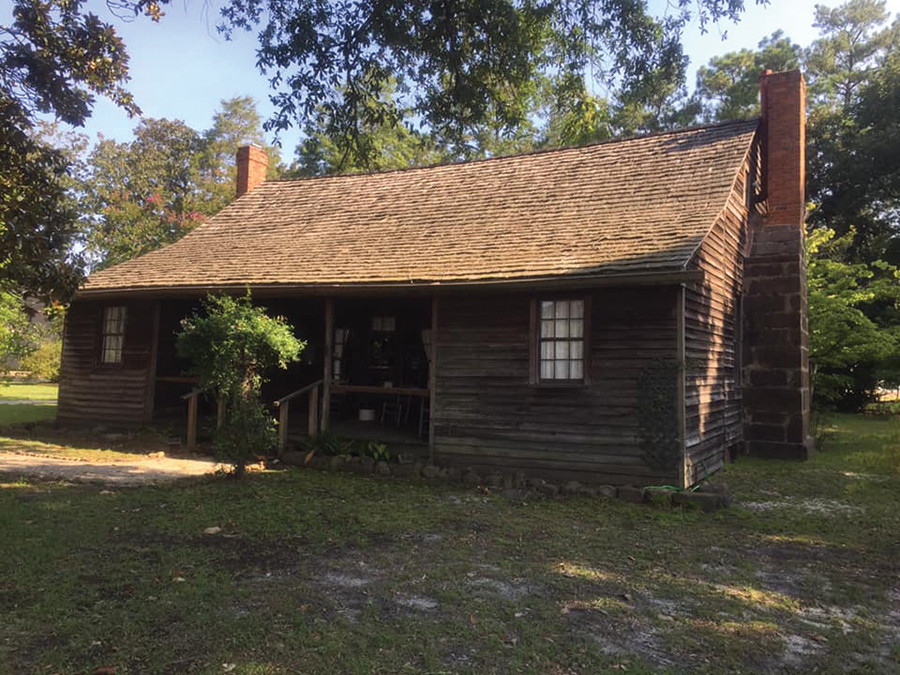
Join the celebration supporting the Moore Country Historical Association at the Shaw House Heritage Fair from 9 a.m. to 4 p.m. on Saturday, Oct. 4, at 10 W. Morganton Road, Southern Pines. There will be live music, re-enactors, tours, live demonstrations, kids’ activities and food vendors. For additional information call (910) 692-2015 or see www.moorehistory.com.
Over 300 antique dealers, including the 12 who call Cameron home, will set up shop during the annual festival that runs from 9 a.m. to 5 p.m., on the weekend of Oct. 4 and 5. The festival takes place rain or shine in Cameron’s Historic District, 485 Carthage St., Cameron. For information call (910) 245-1231 or go to www.antiquesofcameron.com.

Grab your dancing shoes, dress in your favorite Halloween costume and party at the Low Country Boil & Halloween Party featuring DJ King Curtiss and catered by White Rabbit at 6:30 p.m. on October 31 at the Fair Barn. All proceeds benefit the Given Memorial Library and Tufts Archives. Tickets are $75 and can be purchased at ticketmesandhills.com or at the Tufts Archives.
The Empire Strikes Brass, a high energy brass-funk-rock band from Asheville, will take the First Bank Stage at the Sunrise Theater, 250 N.W. Broad St., Southern Pines, on Friday, Oct. 4, from 5 to 8 p.m. There will be food trucks aplenty and alcohol for purchase. No outside alcohol allowed. For information visit www.sunrisetheater.com or call (910) 692-8501.

The annual Holly Arts & Crafts Festival is Saturday, Oct. 19, from 10 a.m. to 4 p.m., on the village streets of Pinehurst, 395 Magnolia Road. Over 200 craft vendors in myriad genres from woodworking to glass, jewelry to sculpture will join the downtown shops. There will be a food court and a Kids Zone with games and crafts on the Village Green sponsored by Given Tufts. For more information visit www.pinehurstbusinesspartners.com.
Enjoy Dumbo on the big screen at the Aberdeen Lake Park Recreation Station, 301 Lake Park Crossing, Aberdeen, on Friday, Oct. 18, at 7:15 p.m. Admission is free, and concessions will be available. Additional information can be found at www.townofaberdeen.net or by calling (910) 944-7275.

The Moore Humane Society’s annual gala will be Friday, Oct. 25, at the Country Club of North Carolina, from 6 p.m. to 9 p.m. Hosted by Patrick Kelly of Star 102.5FM with live music from The Sand Band, a full buffet and a prize-packed auction, the goal is to raise $50,000 to cover veterinary costs for life-saving operations and spay-neuter procedures. Tickets are $75 and a table of eight is $500. To make reservations visit www.moorehumane.org.
Help celebrate the opening of the new pollinator garden at the Village Arboretum in Pinehurst on Saturday, Oct. 5, from 11 a.m. to 2 p.m. The “Flutterby Festival” will feature guided tours of the new garden and a tent where you’ll be surrounded by monarch butterflies. At the end of the event you can tag and release monarchs for their great migration to Mexico. Live music will be provided by the Carolina Philharmonic. There will be food vendors and kids’ activities. For further information go to villageheritagefoundation.org.
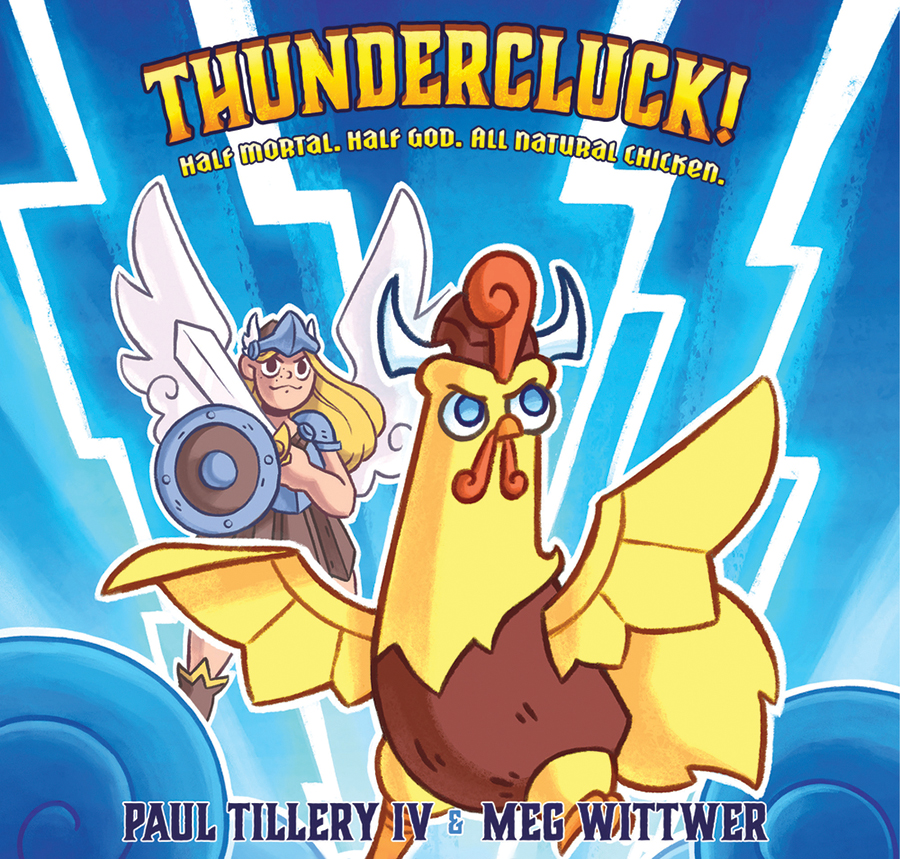
Half mortal. Half God. All natural chicken. The Arts Council of Moore County and Sandhills Community College present “Thundercluk,” the Viking chicken, featuring the animation and storytelling of Paul Tillery and Meg Wittmer. The exhibit will be in the Katharine L. Boyd Library, SCC, 3395 Airport Road, Pinehurst, Oct. 2–30. There will be a reception and artist’s talk on Oct. 2 from 3–5 p.m. It’s free and open to the public. The exhibit will include illustrations, animation and storytelling. The character was created by Tillery while he was at the Savannah College of Art and Design, where he earned his Master of Fine Arts degree in 2014. For further information visit www.mooreart.org.
Sunday, Oct. 6: Julian Loida is a Boston-based percussionist, composer and producer. His musical curiosity and open-mindedness have propelled him toward a wide range of sounds, genres, and artistic endeavors. Loida will open the evening with selections from his amazing new solo vibraphone album. Folk rocker James Maddock brings prodigious guitar skills to match his evocative lyrics. Cost: $20.

Thursday, Oct. 10: In 2018, Beth and Ara Lee James formed the duo project Stand and Sway, pushing the boundaries of soul and folk music and attempting to break down the walls that have separated the worlds of music and poetry. Cost: $15.
Sunday, Oct. 13: Introduced by the legendary Li’l Queenie and Leigh Harris, Josh Paxton and Debbie Davis have spent the better part of two decades exploring their shared musical interests, ranging from Ellington and Jelly Roll Morton to Stevie Wonder and Randy Newman. They have performed in Switzerland, Italy, and France in addition to performances across the U.S. Piano and all that jazz. Cost: $15
Thursday, Oct. 17: Open mic with the The Parsons. Free to members.
Sunday, Oct. 20: Journey to the Andalusia region of Spain for an authentic Spanish Tablao at The Rooster’s Wife. Experience the intense, emotional power of Flamenco. Eduardo’s Noche Flamenca combines Spanish music, dance, cuisine and wines with renowned performers from Cuba, Spain, Venezuela, Canada and the United States. Cost: $18.
Thursday, Oct. 24: Jeremy Pinnell, Kentucky’s son from across the river, is a soft-spoken man, born to an area that is equal parts Southern hospitality, Northern attitude and Midwestern charm. Raised from humble beginnings singing in church, he learned guitar from his father and soon his craft made heads turn and rooms fall silent. When he left home at 18 to venture into the unknown, Pinnell found himself surrounded by the demons of the world he tried to sing away. The stories told are true, not embellished folklore. Jeremy will not speak of them; only sing. While he has returned to his roots and is living an honest life, his experiences must be heard to be believed. They are real, and most importantly, never forgotten. Cost: $15.
Sunday, Oct. 27: Rosier. Lanaudière is known round the world as Québec’s most musical region. There, traditional music is in the air and water, handed down through generations. Such is the story of the members of Rosier, four young gals and a guy named Colin who grew up in active musician families in Lanaudière, and carry the traditions forward while adding some new songs and sounds of their own. They perform a sparkling, diversified, bilingual repertoire of intimate waltzes, reels and beautifully sung call-and-response songs. Cost: $15.
Unless otherwise noted, doors open at 6 p.m. and music begins at 6:46 at the Poplar Knight Spot, 114 Knight St., Aberdeen. Prices above are for members. Annual memberships are $5 and available online or at the door. For more information call (910) 944-7502 or visit www.theroosterswife.org or ticketmesandhills.com.
Rely on the classics
By Tony Cross
A friend of mine recently made the transition from lifetime server to behind the bar. As a server, he’s probably one of the best that I’ve ever had the pleasure to work with. He’s fast, knowledgeable and friendly, but most importantly, he can work a room. Whether a server has been given multiple tables at once, or it’s an extremely busy night, if he/she can get everyone on their side, the rest of the night is butter.
And that’s what he did. Night in and night out. I’m talking upselling appetizers, better wine, and that extra dessert. This always results in great tips and constant requests from big spenders.
But now that he’s a bartender, the night feels a bit foreign. He wants to do the best job that he can do, and knowing his work ethic, he’ll do just fine. However, when he first made the transition, he started asking me how to do infusions, and other drinks that, for novices, are a bit over the top. My friend — we’ll call him “Danny” — is not a big drinker; what he does drink is quite simple, e.g., domestic beer, wine and the occasional cocktail.
My response to Danny’s questions might have come off a bit unsympathetic, but sincere, and I hope he takes it to heart. “Learn the classics first,” I told him. For someone that’s never experimented with cocktails in the workplace or at home, this is pretty standard advice. There’s no point in making a fat-washed bourbon for a Manhattan if you don’t understand the Manhattan to begin with. I don’t care how good your infusion is, if your specs are off, your cocktail will be, too. Not to mention the other things to be mindful about while bartending: engaging customers while making copious drinks; being able to juggle making different cocktails at once while making eye contact with your guests; greeting newly seated bar guests, taking orders, and creating an atmosphere. Did I mention engaging? If you’re new to making drinks, you most definitely do not need six-plus ingredient drinks on your menu. You will set yourself up for failure one way or another. Either your drinks or your guests will suffer. Maybe both.
I have another friend who is a retired bartender. And by “retired,” I mean he was behind the stick for a decade or so before he decided to move on to another profession outside of the hospitality business. We’ll call him “Adam.” Even though Adam was a bartender by trade for many years, he couldn’t make many drinks that I would deem drink-worthy. God, that sounds pretentious. But if you knew Adam, you’d know what I mean.
I worked with Adam for a few years while I was a server. It pained me waiting for my drinks. It wasn’t that Adam was physically slow making drinks; it was just that he was more interested in chatting it up with his bar guests. Many a night, while I was standing there waiting for my three or four cocktails, Adam would be in the middle of mixing them while talking to one of our regulars. Uh-oh. His face read, “Did I or did I not already add that ounce-and-a-half of vodka?” Just to be sure, Adam would go ahead and pour more into the shaker. Like clockwork, I would return in five minutes because my table couldn’t stomach the unbalanced drink. One Wednesday night I came as a customer, sat at the bar with Adam, ordered a beer, and stayed for dinner. That was when I realized why Adam had so many regulars. Even though I ate alone, Adam kept me entertained the whole evening. I had a good time and left with a smile on my face.
I’m mentioning my two friends for a reason. Yes, there’s a moral to the stories. A great bartender is able to cover multiple tasks while looking cool under pressure. I’m certain that Danny is going to learn the ropes quickly — multitasking is his first language — and once he gets his drinks down, he’s going to be amazing. And Adam. Though I’d never say he was a great bartender, he was spot-on in his hospitality. If you’re new to bartending, especially in a restaurant bar, you’ll need balance.
Start with the classics. Have a handful of drinks that you know like the back of your hand, and study up why they work. Lots of great bartenders have used these recipes as backbones for new drinks when they are inspired. Keep your cocktail list simple, but delicious. And if you’re just the imbiber and it’s your first time at this bar or restaurant: order a daiquiri. If it’s no bueno, chances are the rest of the drinks on the list aren’t either.
Or do what I’d do when visiting Adam — just order a beer. PS
Tony Cross is a bartender who runs cocktail catering company Reverie Cocktails in Southern Pines.